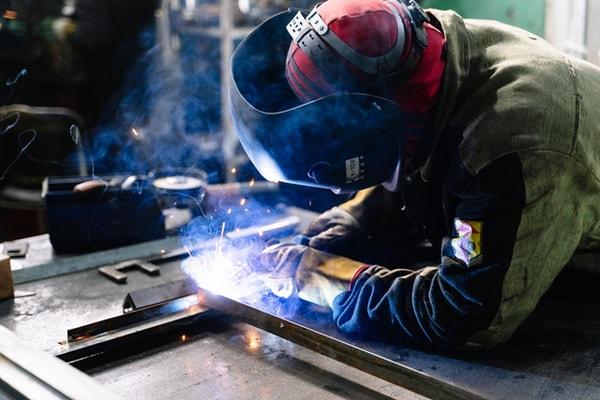Advanced Welding WPS: Tailoring Specs for Facility Tasks
Advanced Welding WPS: Tailoring Specs for Facility Tasks
Blog Article
Understanding Welding WPS Standards: Ideal Practices and Techniques for High Quality Welds
In the realm of welding, grasping Welding Procedure Requirements (WPS) standards is an essential component that directly affects the high quality and integrity of welds. Abiding by these requirements guarantees uniformity and dependability in welding outcomes. Nonetheless, accomplishing excellence in welds goes past merely recognizing the requirements; it involves applying finest techniques and methods that elevate the craft to a degree of precision and ability that distinguishes the standard from the remarkable. As we browse through the intricacies of welding WPS standards, revealing key insights and methods for attaining top-tier welds will be extremely important for welders seeking to master their craft and produce welds that stand the examination of time.
Recognizing Welding WPS Criteria

Comprehending WPS standards is vital for welders, assessors, and engineers associated with welding procedures. By complying with WPS standards, welders can create welds that satisfy the needed mechanical homes and architectural integrity. Inspectors rely upon WPS paperwork to validate that welding treatments are being followed correctly and that the resulting welds are of top quality. Engineers utilize WPS requirements to create welding treatments that make certain the resilience and dependability of bonded structures.


Essential Tools for Top Quality Welds
Understanding welding WPS criteria is necessary for welders to successfully use the important devices needed for generating high quality welds. One of the most crucial tools for quality welds is a welding equipment. The kind of welding equipment needed relies on the welding procedure being utilized, such as MIG, TIG, or stick welding. Welding safety helmets are likewise vital to secure the welder's eyes and face from sparks, warmth, and UV radiation. In addition, welding gloves made from heat-resistant and resilient products secure the hands from burns and injuries. Magnets and clamps assist hold the workpieces together securely during the welding process, guaranteeing exact and exact welds. Cable brushes and damaging hammers are essential for cleaning up the weld joint before and after welding to eliminate any type of pollutants that can influence the high quality of the weld. Finally, a measuring tape and angle grinder work tools for guaranteeing appropriate positioning and preparing the workpieces for welding.
Key Strategies for Welding Success
To accomplish welding success, one have to grasp the vital methods essential for creating high-quality welds. One critical method is keeping the right arc length. Maintaining the electrode at the optimal distance from the work surface is crucial for producing solid, consistent welds. Additionally, controlling the traveling speed is vital. Relocating as well rapidly can lead to not enough infiltration, while moving too slowly can cause too much heat input and possible flaws. Correct adjustment of the electrode angle is another essential method. The angle at which the electrode is held can impact the bead shape and penetration of the weld. Furthermore, making certain constant weapon angle and direction of travel is vital for uniformity in the weld grain. Lastly, keeping a consistent hand and a steady welding position throughout the procedure is vital to attaining precision and consistency in the welds. By mastering these vital strategies, welders can elevate the high quality of their work and attain welding success.
Ensuring Conformity With WPS Specifications

Furthermore, welders need to go through training to familiarize themselves with the WPS standards relevant to their work. Routine audits and assessments should be performed to confirm that welding activities straighten with the recommended WPS standards. Furthermore, maintaining thorough records of welding parameters, devices calibration, and evaluation outcomes is vital for demonstrating conformity with WPS requirements - welding WPS. By carefully sticking to WPS criteria, welders can guarantee that their work satisfies the needed high quality degrees and adds to the general success of the welding task.
Troubleshooting Common Welding Issues
When confronted with usual welding problems, determining the origin reason is crucial for effective troubleshooting. One prevalent problem is the visibility of porosity in welds, typically triggered by pollutants such as corrosion, wetness, or oil. To resolve this, guaranteeing correct cleansing of the base metal before welding and making use visit of the right protecting gas can dramatically decrease porosity. One more problem regularly run into is lack of fusion, where the weld stops working to effectively bond with the base material. This can come from poor warmth input or improper welding strategy. Changing specifications such as voltage, wire feed rate, or travel speed can assist improve combination. Furthermore, distortion, splitting, and spatter are usual welding difficulties that can be alleviated with correct joint Get More Info preparation, consistent warm control, and choosing the proper welding consumables. By extensively recognizing these common welding issues and their root creates, welders can successfully fix problems and achieve high-quality welds.
Conclusion
To conclude, mastering welding WPS requirements calls for a comprehensive understanding of the guidelines, utilizing important devices, and applying essential strategies for effective welds. Making certain conformity with WPS requirements is important for creating top quality welds and preventing common welding concerns. By adhering to ideal practices and strategies, welders can accomplish reliable and regular results in their welding jobs.
In the world of welding, mastering Welding Procedure Specification (WPS) criteria is an important component that straight affects the quality and integrity of welds.When delving into the realm of welding techniques, an important element to comprehend is the value and details of Welding Procedure Specification (WPS) requirements. WPS criteria provide a thorough guideline for welding operations, making sure consistency, high quality, and safety in the welding process. The type of welding device Full Article required depends on the welding procedure being used, such as MIG, TIG, or stick welding.Achieving welding success with the mastery of vital techniques demands a detailed understanding and adherence to Welding Procedure Requirements (WPS) standards.
Report this page